Winning formula: Money, tech, design
Published on January 9th, 2023
In 2021, TP52 Celestial missed winning the Rolex Sydney Hobart Yacht Race on IRC corrected time due to a penalty for an infringement of the racing rules. But the team returned in 2022 got the job done to claim the perpetual trophy Tattersall Cup. Celestial owner Sam Haynes shares insight into their 628 nm race:
What tactical decisions gave you an edge over the other boats?
It was being able to play the shifts and getting the oceanography correct to do a close to perfect race, and we managed to get that done. James Dagge is our navigator and Rob Greenhalgh is our sailing master and tactician, and he was all over this.
I think his tactical race was awesome. Rob kept the boat really calm, he had us focussed on speed the entire race. He set that up all really well, the culture of the boat and the competitive nature of the boat was set up by people like him and Jack Macartney.
We really started winning the race before we got on the water because of the input from those guys.
Explain the quad set-up (flying a spinnaker, sprit top, headsail and genoa staysail simultaneously).
A lot of good seamanship and good boat handling [is involved]. There were multiple sail changes, especially when you are quad heading. There’s a lot of cross sheeting. It’s difficult to have a lot of rag up in the air and be able to trim it. The technicality of the race with those sail plans is quite tricky.
The TP52s dominated the final overall standings. Why do you think that is?
The TP52s do well for lots of reasons. Some people think they have a handicap that favors them. It tends also that these boats have a lot of professional sailors, a lot of money invested in them, the highest technology sails, mechanics and design elements. TP52s are always being modified to be more competitive.
We’re always going to be doing extremely well in these sorts of races because of the style of boat. They’re versatile, they’re obviously great downwind, but they’ve got upwind performance as well.
You won on IRC and ORCi but have since withdrawn from ORCi. Why?
We withdrew from ORCi as we became aware that flying the jib [while quad heading] is not legal in that format. We did that as soon as were aware that we were breaking the rule.
What were your race highlights?
On that first 24 hours it was beautiful champagne sailing. We’d quad headed or triple headed, the A2 spinnaker was up, the full main, sea state was kind, the boat was chewing up miles, which was fantastic, and morale was high. We had great food from Sam Joel. We had boil-in-a-bag stew and spaghetti bolognese. It was nice to be eating great meals, that always picks up morale.
We were always busy, constantly trimming and racing. And we knew we were doing well because we knew where the boats around us were at, and we felt like we were in it with a chance even though we had damage to the mainsail late on the 27th. Even with that, the boat was performing.
Challenges?
There were three main issues that I was concerned about.
The first was that we couldn’t get the masthead halyard with the A2 spinnaker to lock, so we sailed with it off the lock for probably over 24 hours. I was waiting for it to become an issue, but the expert sailors were like, ‘It’s fine, don’t worry.’
Then we broke the gaff batten [a batten at the top of the sail that supports the flat edge aloft] in the spinnaker change in the early hours of the 28th. We got the head of the spinnaker across the mainsail, in getting it down we broke the batten. I thought it was fatal, but Rob Greenhalgh said, ‘Don’t worry about it, it’ll be fine.’ When you’ve got a guy with that experience and level of expertise with you, you have the confidence to think, ‘Okay I’ll put that out of my head.’
Another time I was concerned was just before daybreak. We were getting 30-35 knot gusts, super solid breeze, wind coming down from the north as we came into the Tasman Island group, big sea state going on, and we tipped in, spun out on a wave and a gust with the A4 spinnaker up. The A4 luckily gave way as the boat was on its side. There’s high risk on the rig, risk you aren’t going to get the boat back up, there’s a lot of chaos going on.
Those are the sorts of moments when you personally don’t have time to panic because everyone has to do their job properly and be in control. Those are the moments where you can easily go from winning a race to being put out of the race, and we had one of those moments, but we recovered. We had the A6 spinnaker up in short order, and everything was stowed away and sorted out.
I’ve always said that owning a TP52 is the hardest way to win a race because there’s so many people that can. We’re very competitive. It’s nice to know that you have such a strong fleet because it pushes everyone.
What’s next for you?
The 2023 Sydney Hobart. It’s hard to walk away without defending your title. Fingers crossed it’s another epic race like 2022. Every time you do a Sydney Hobart you think, ‘What am I doing out here?’ And then when you get into Kings Pier Marina, you go, ‘Hang on a sec, that was fantastic, what an awesome experience.’ And I think we live for these experiences.
Celestial crew:
Skipper – Sam Haynes
Navigator – James Dagge
Crew – Lewis Brake, Callum Cecil, David Chapman, Troy Grafton, Robert Greenhalgh, Josh Junior, Jack Macartney, Frank O’Leary, Malcolm Parker, Luke Payne, Lindsay Stead, Harry West and Wulf Wilkens.
Source: Greta Quealy / Australian TP52 Sailing Association
Race details – Standings – Tracker – Facebook
The 628 nm Rolex Sydney Hobart Yacht Race is the 77th edition in 2022 and had a fleet of 109 boats for the start on December 26. One hundred fifty seven teams set off in 2019, but since then the 2020 race was cancelled due to the pandemic with 88 entries in 2021.
From the start in Sydney Harbour, the fleet sails out into the Tasman Sea, down the south-east coast of mainland Australia, across Bass Strait (which divides the mainland from the island State of Tasmania), then down the east coast of Tasmania. At Tasman Island the fleet turns right into Storm Bay for the final sail up the Derwent River to the historic port city of Hobart.




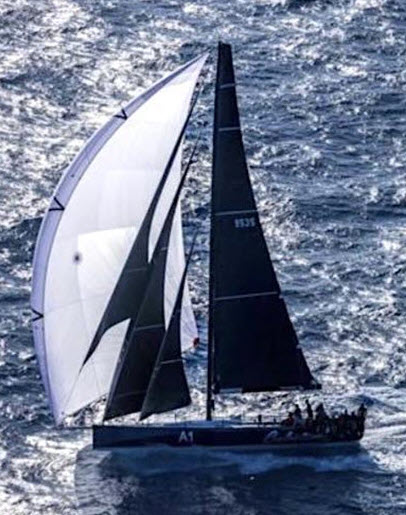
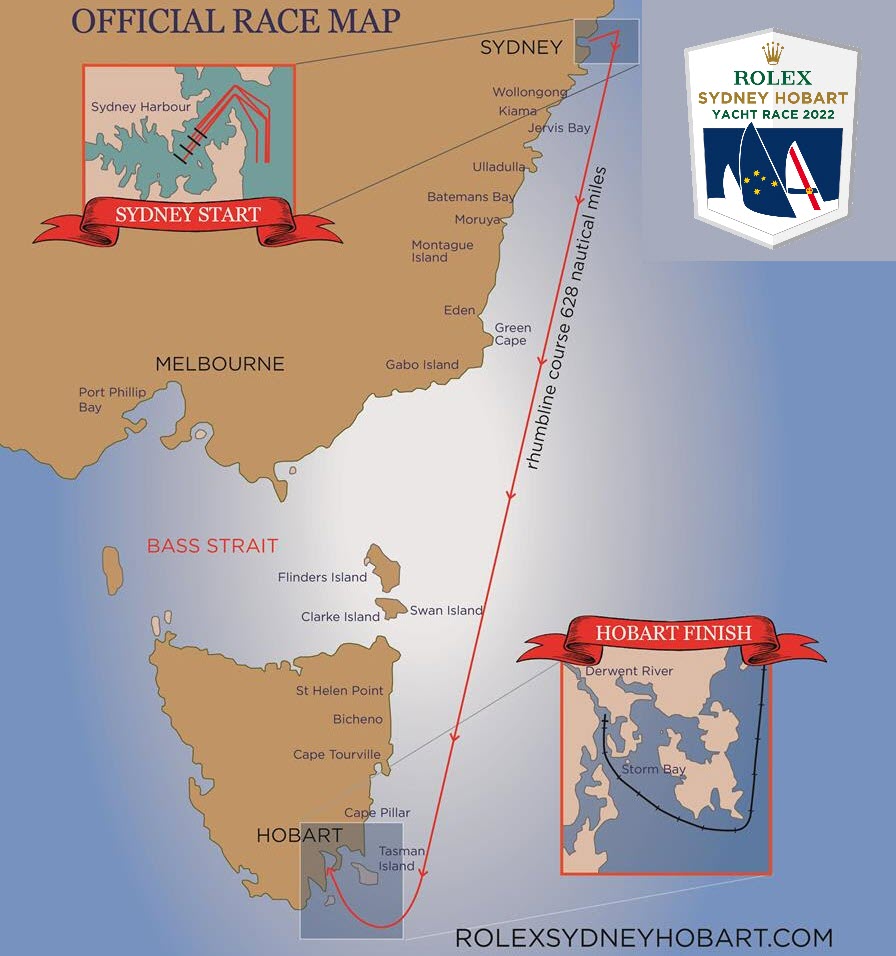


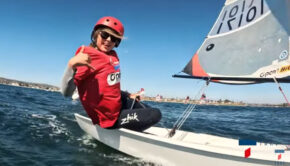
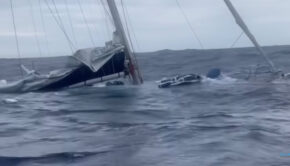
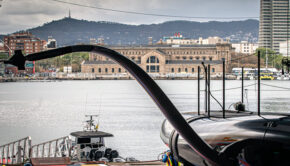
 We’ll keep your information safe.
We’ll keep your information safe.